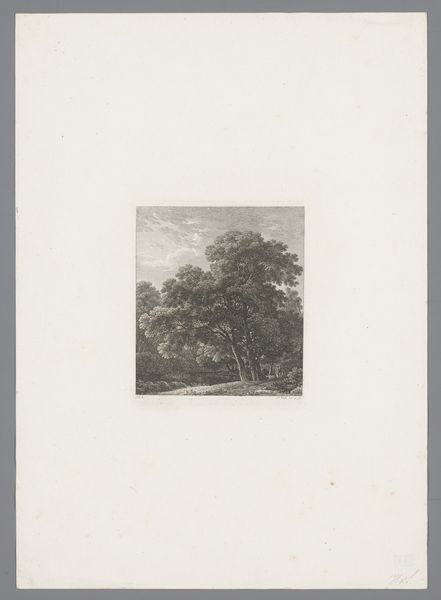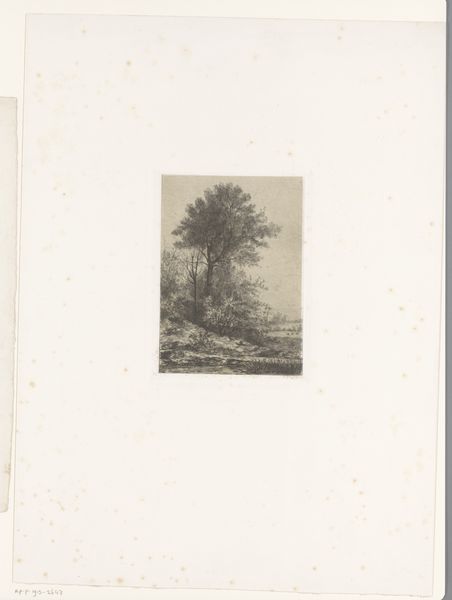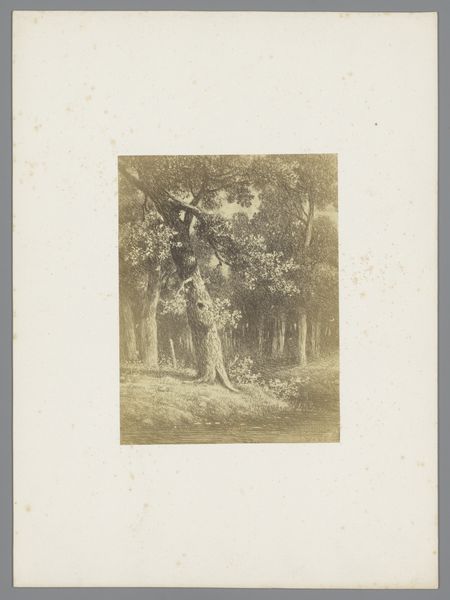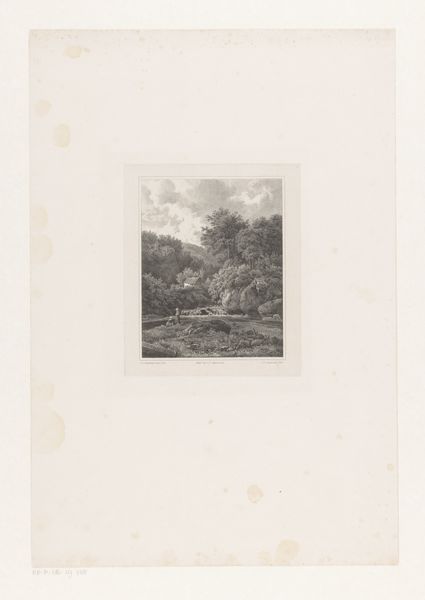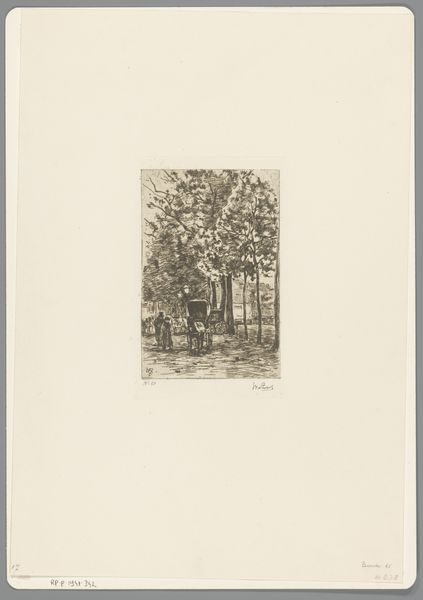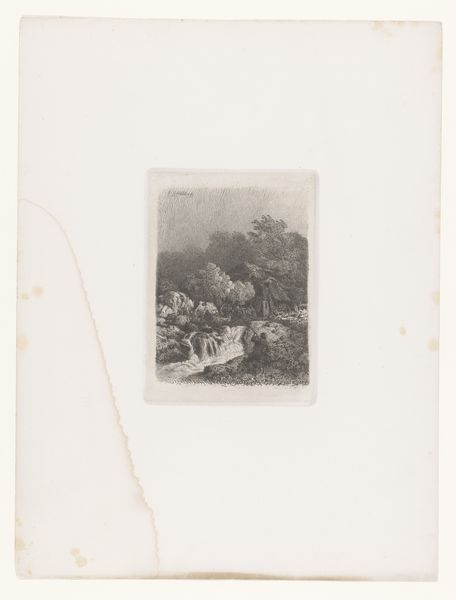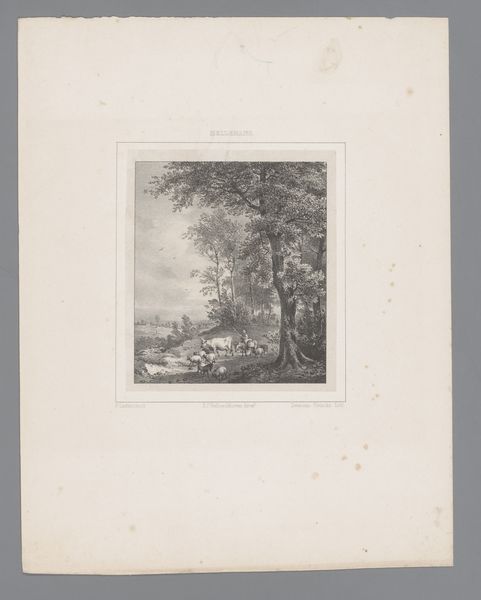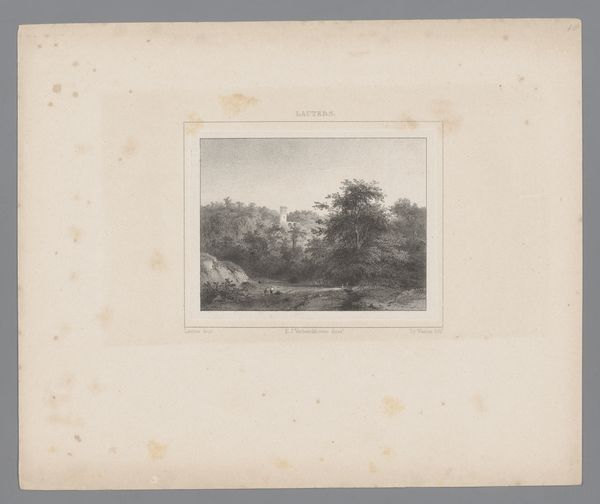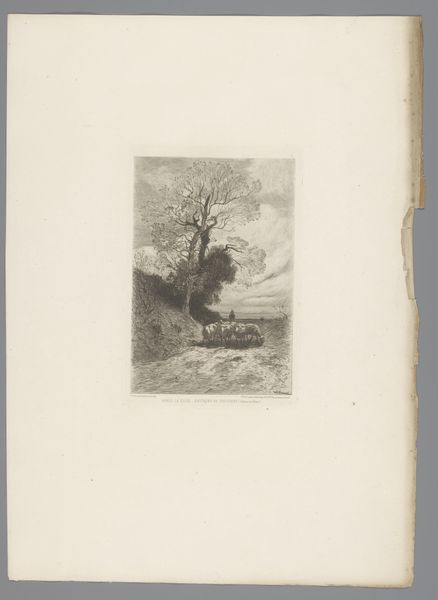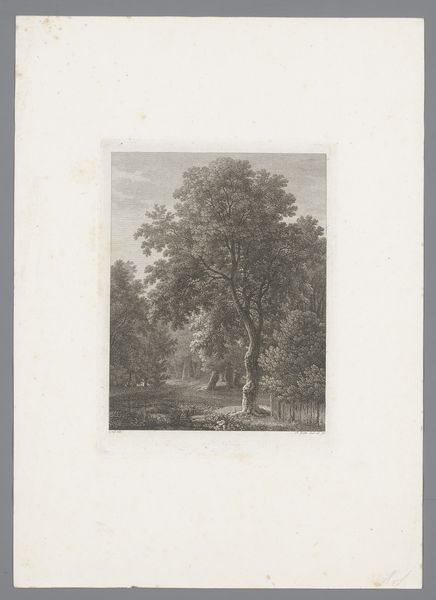
drawing, print, engraving
#
drawing
#
mother
# print
#
landscape
#
figuration
#
romanticism
#
engraving
#
miniature
Dimensions: height 115 mm, width 97 mm
Copyright: Rijks Museum: Open Domain
Editor: This is Philipp Veith's "Landschap met een waterput en een vrouw met kind" – or, "Landscape with a Well and a Woman with Child" – from 1822. It's an engraving, so lines are everything here. It feels incredibly peaceful; the textures of the trees and the wispy clouds create a dreamy effect. How do you interpret this work, focusing on the visual elements? Curator: Indeed. Note how the artist deploys a rigorous compositional structure, almost academically precise in its arrangement. The trees on either side act as framing devices, guiding the eye towards the center where the woman and child are situated. Observe, too, the tonal gradations achieved solely through line work—Veith masterfully renders depth and atmosphere through variations in the density and direction of these lines. The eye is led rhythmically to the middle ground, anchored by a well-balanced cluster of vertical tree trunks, before it journeys to the distant horizon line. Consider, too, the miniature scale – how does this intimacy of scale influence your encounter? Editor: The scale definitely intensifies the feeling of privacy and tranquility. But I’m curious, does the focus on pure form and structure in landscapes like these carry philosophical meanings? Curator: Implicitly. This precise structuring alludes to a perceived order within the natural world itself, which can be understood through reason and keen observation. This echoes larger philosophies concerning the relationship between humanity, nature, and the possibility of understanding underlying cosmic harmonies. But observe - even with these formal techniques, are there points of asymmetrical tensions which you might decode differently? Editor: I hadn't considered that tension, that is fascinating! The formalist perspective reveals hidden layers, suggesting much more complexity than initially met the eye. Curator: Precisely. By engaging critically with formal elements, new modes of appreciation emerge.
Comments
No comments
Be the first to comment and join the conversation on the ultimate creative platform.
